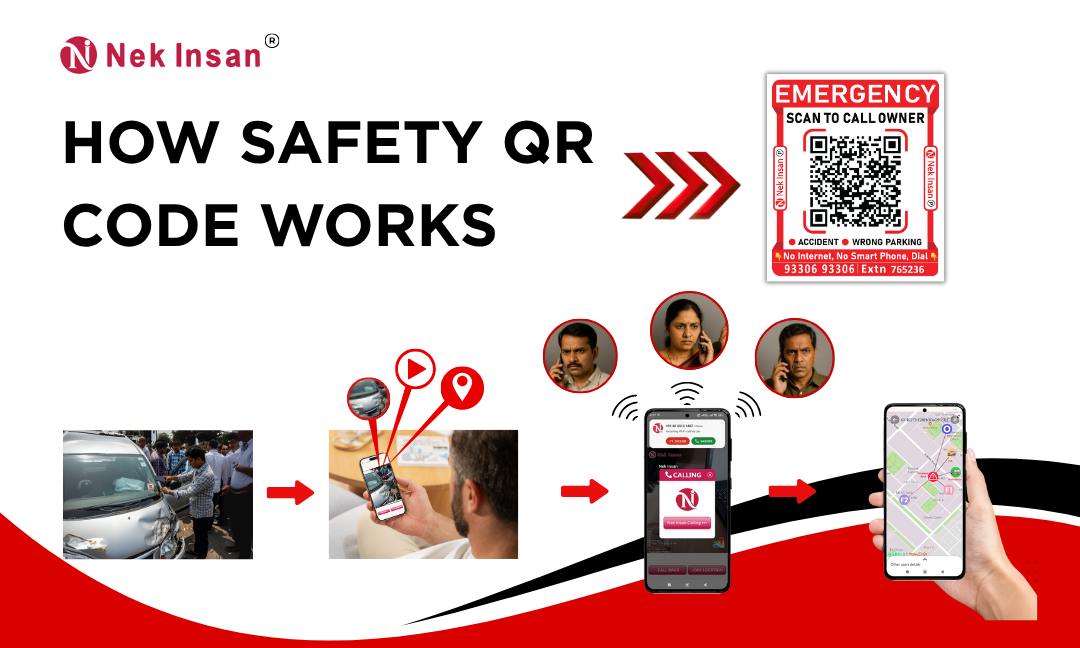Safety QR Code: How it works?
Views: 26 | Updated: 6 hours, 14 minutes ago
Safety QR codes work by encoding crucial information that can be accessed instantly with a simple scan from a smartphone or other device. The core function of a QR code is to act as a bridge between the physical and digital world, and "safety" is a specific application of this technology.
Here's a breakdown of how they work and what makes them "safe":
How QR Codes Work
A QR (Quick Response) code is a two-dimensional barcode that stores data in a square pattern of black and white squares. When you scan a QR code with a camera, the device's software interprets the pattern and translates it into a human-readable format. This data can be:
- A website URL
- Text
-
Contact information
- Location data
- Payment details
Applying QR Codes for Safety
In a safety context, the encoded information is specifically designed to provide essential safety-related content. This can include:
Use NekInsan Safety QR Code
NekInsan is a company that provides safety solutions using QR codes on stickers and tags for various applications, including vehicles, children, and personal belongings. Their system is designed to facilitate quick communication in an emergency while protecting the privacy of the owner.
Here's a breakdown of how the Nekinsan safety QR code system works:
1. Purchase and Setup
- You purchase a Nekinsan QR code sticker or tag for a specific purpose (e.g., car, bike, child, keys).
- You register the unique QR code on the NekInsan platform, either through their app or website.
- During registration, you link the QR code to your profile and pre-register a list of emergency contacts (family, friends, etc.).
- You can also add other important information, such as medical details like allergies or blood type, although the primary function is communication.
2. The Trigger: Scanning the QR Code
- If an incident occurs (e.g., a car accident, a lost child, or a misplaced item), a helpful person (referred to as a "Nek Insan" or good Samaritan), a police officer, or a first responder can scan the QR code.
- The scan can be done with any standard QR code scanner, such as Google Lens, Paytm, GPay, or a smartphone's camera, without needing a special app.
3. The Immediate Response
- Instant Alert: The moment the QR code is scanned, an alert is sent to the owner of the item and their pre-registered emergency contacts.
- Siren Alert: This alert often includes a siren sound that plays on the emergency contacts' phones, even if the screen is locked, to ensure they don't miss the critical notification.
- Location and Context: The alert provides the date, time, and precise GPS location of where the scan occurred. The scanner is also prompted to capture and send a photo or video of the situation, which gives the emergency contacts valuable visual context (e.g., a photo of a car crash or a picture of a lost child).
4. Communication and Privacy
5. Accessing Emergency Services
- After the communication with the emergency contacts, the scanner's phone will often display a pop-up with local emergency helpline numbers (e.g., Police, Ambulance, Fire department), allowing them to quickly call for professional help.
While the system is primarily for emergencies, Nekinsan also applies it to non-critical situations:


